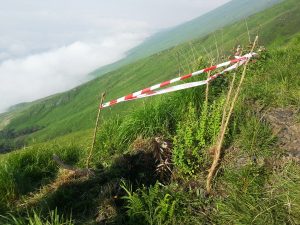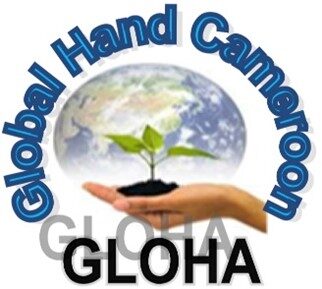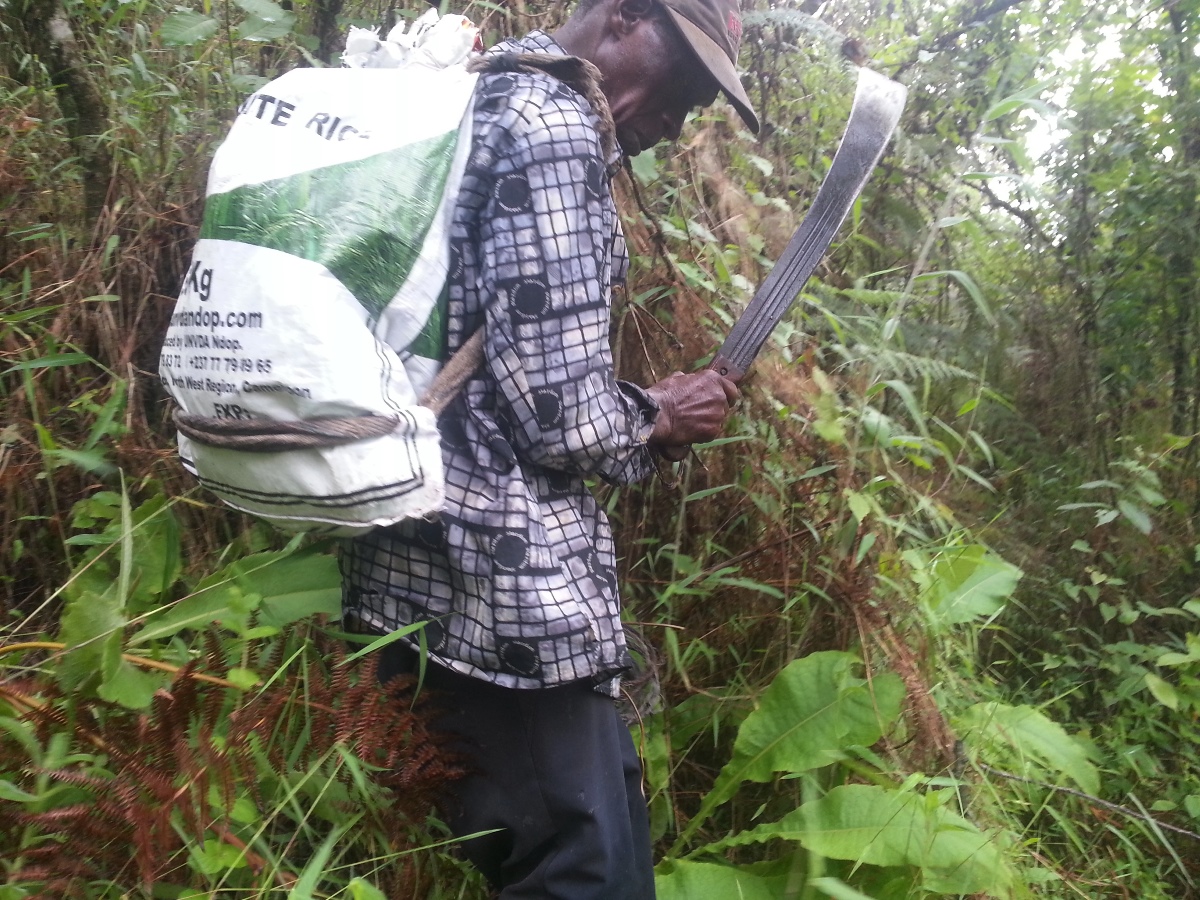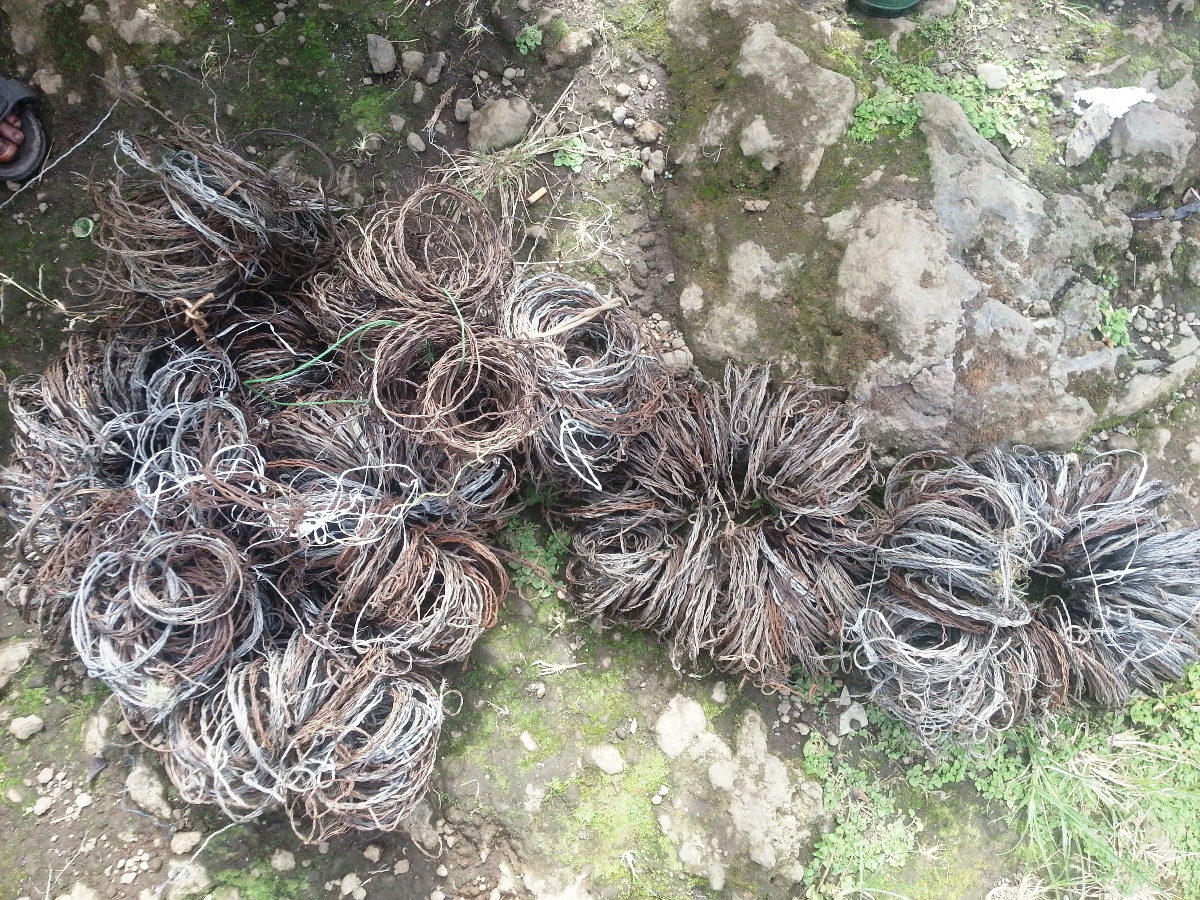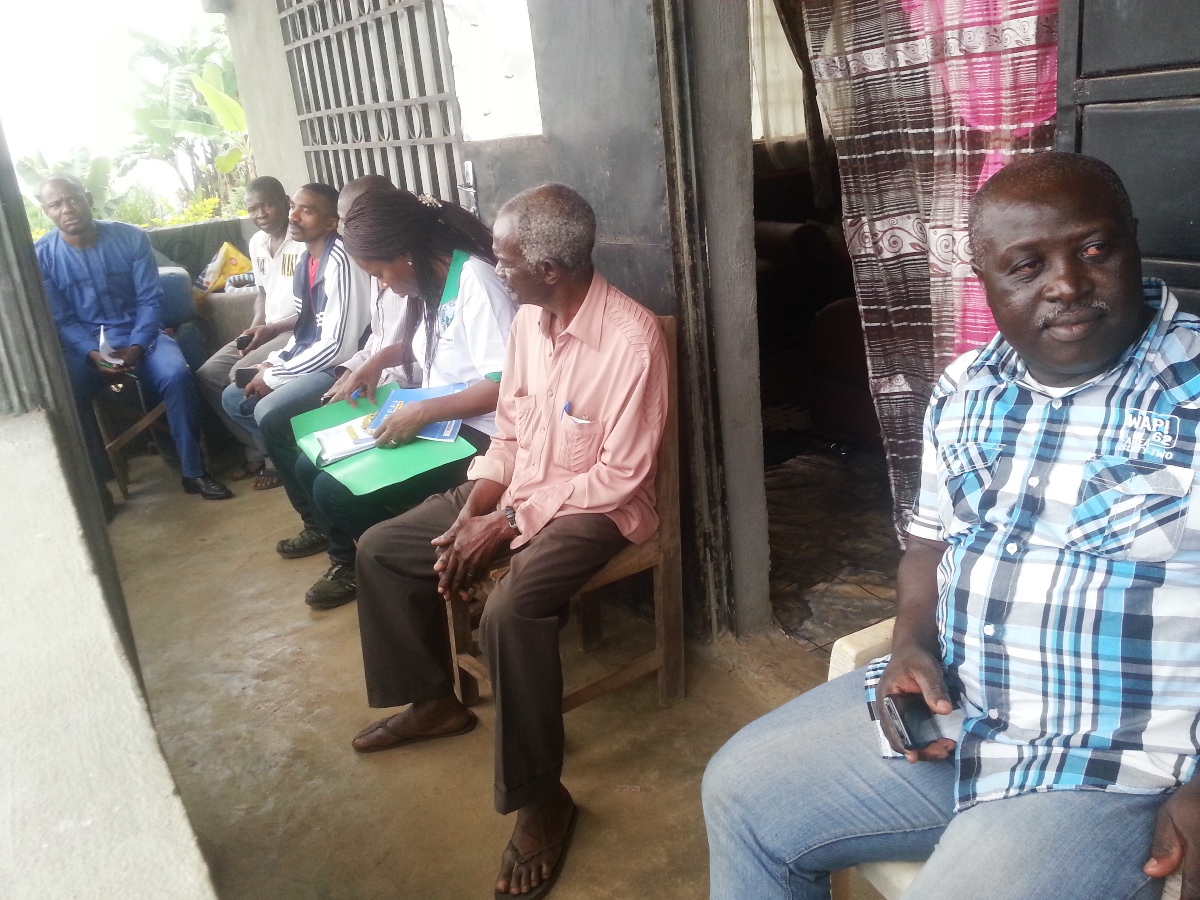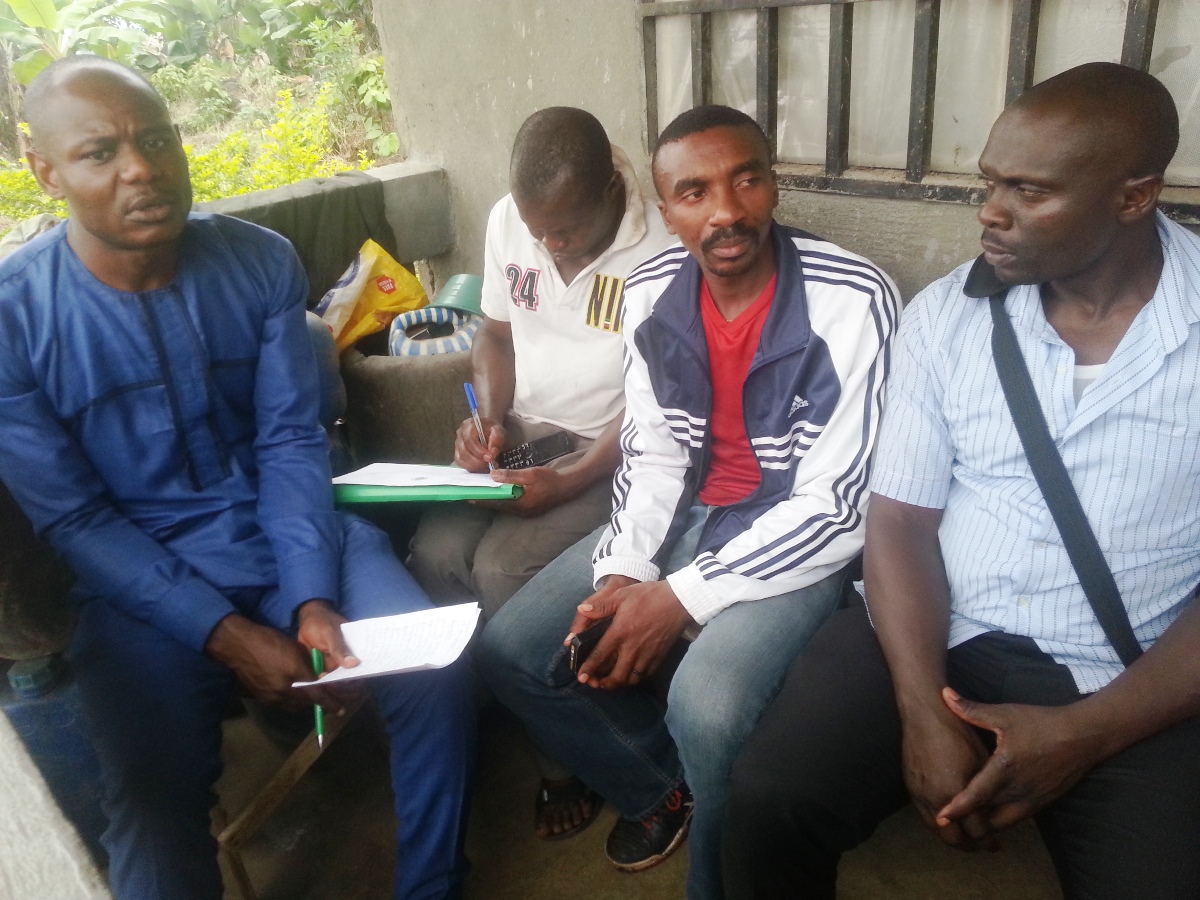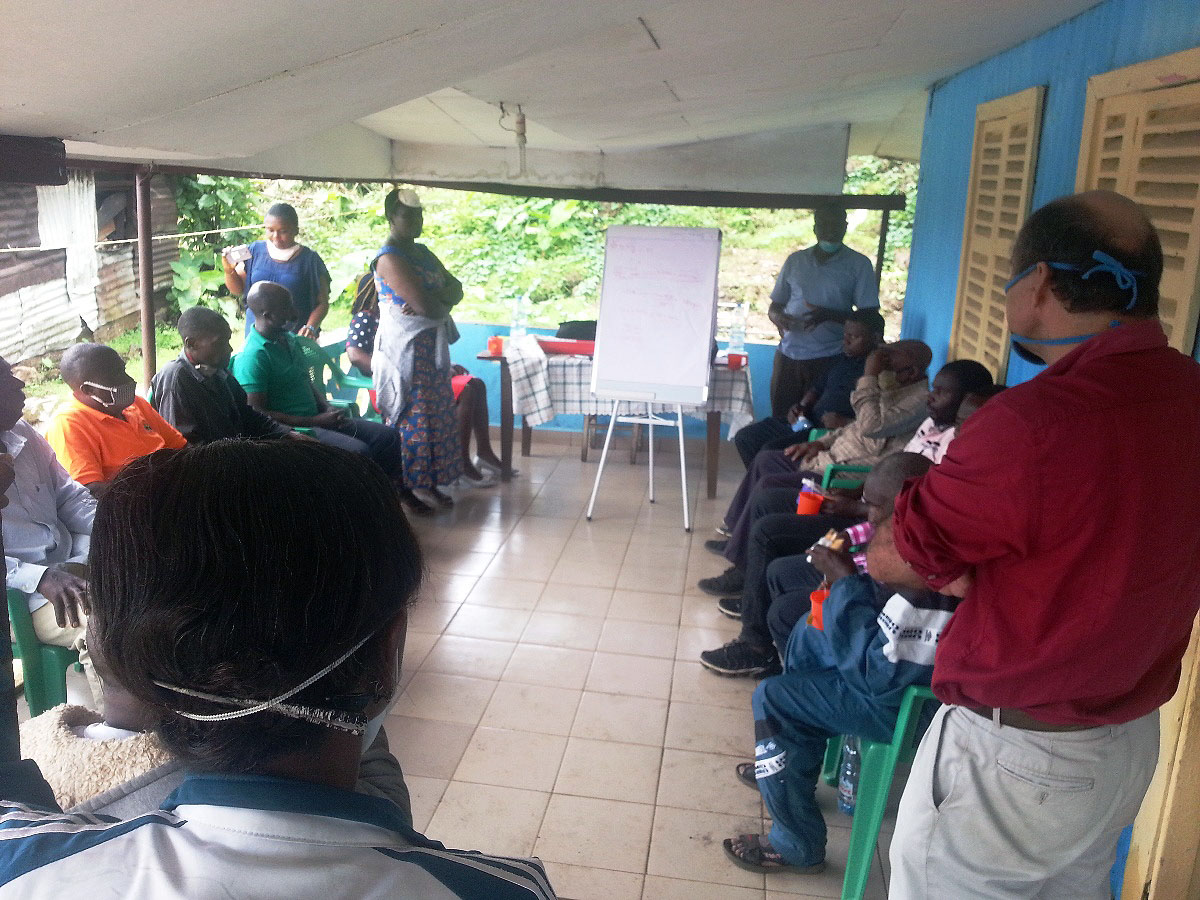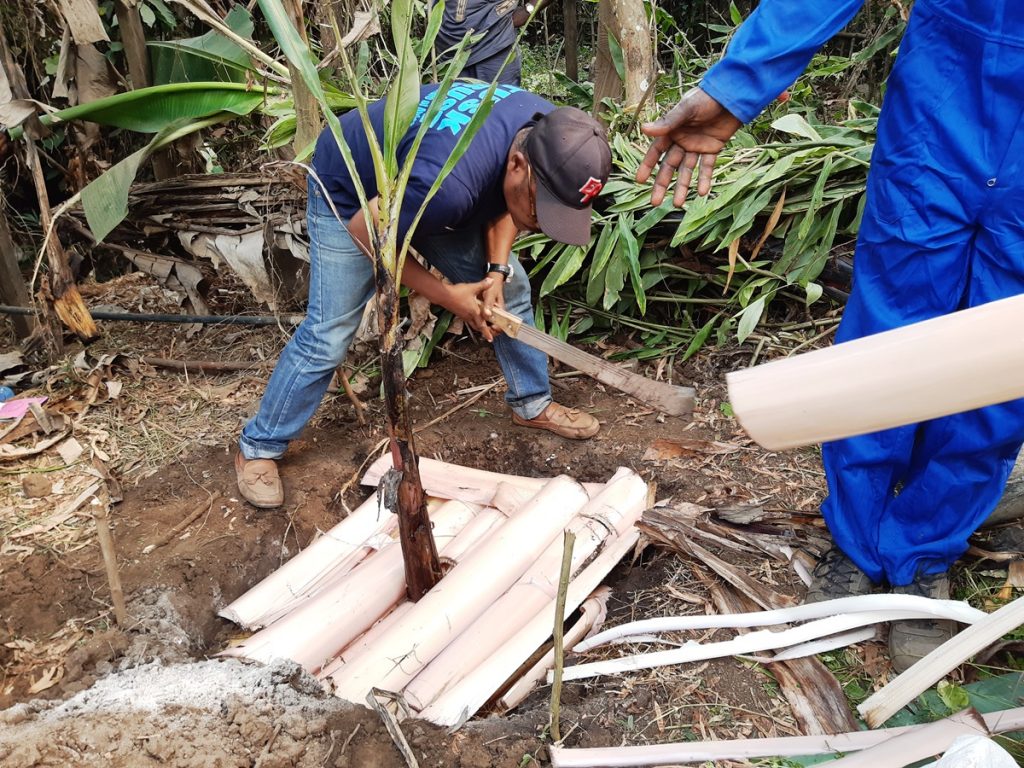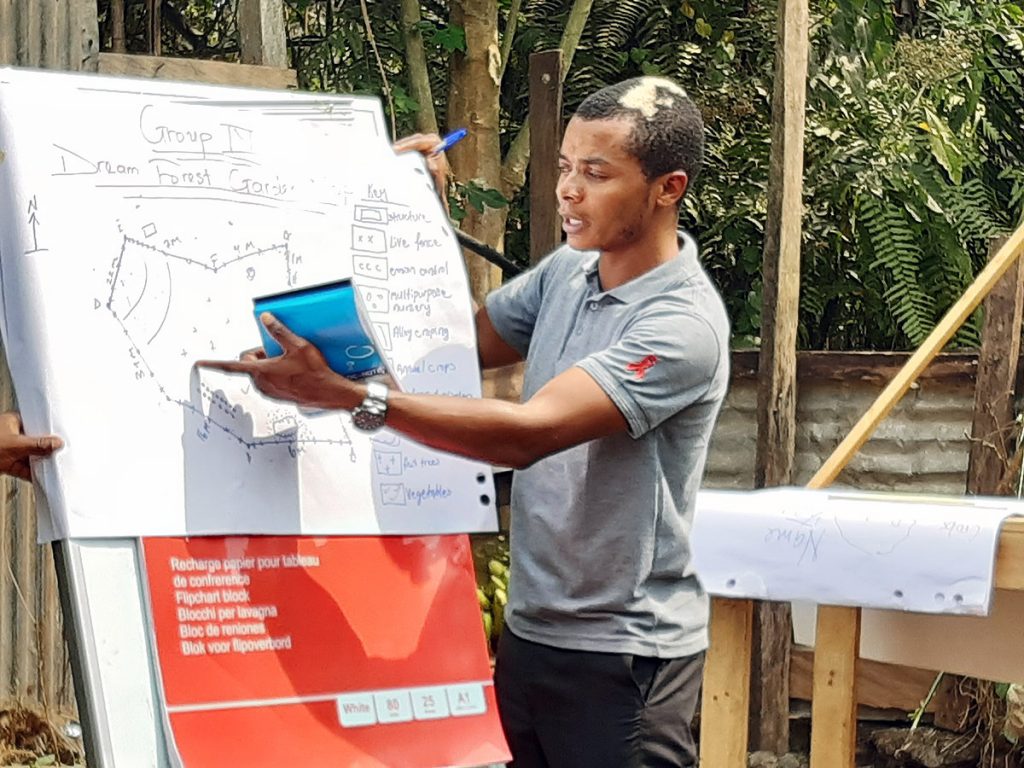Global Hand Cameroon was fortunate to be able to participate in an excellent training course recently on the topic of ecosystem restoration and poverty alleviation through Forest Gardening. Our report follows:
Forest Gardening: A Resilient Farming System
Over the years, local farmers have had great success using traditional farming techniques. In the past, the majority of farmers around the Mount Cameroon area and beyond relied on the traditional farming calendar and natural ecosystem services and restoration opportunities. Farmers worried less about soil nutrient, structure and texture enhancements. Back then, the soil was just good enough to produce what the farmers needed, taking into account other environmental aspects that manipulated the ecosystem positively such as the moisture level, temperature, and forest cover, to name just a few.
With the recent climatic and other related environmental challenges that have negatively affected traditional farming knowledge and practice, local populations have had to resort to various solutions to their individual challenges. In addition, changing agricultural conditions have influenced the introduction of new crops such as maize, sweet potato and cassava, which require cutting down the forest carbon sink in order to provide the required sunlight to crops, and tilling of beds which destroys the soil. In one way or another, these practices alter the entire landscape and expose the earth surface to direct sunlight, resulting in high water loss which in turn can lead to long-term drought, as well as exposing soil microbial organisms to intense sunlight, reducing their effectiveness or even killing them altogether.
These climate change-induced challenges have added to the challenges which already exist, making it almost impossible for some farmers to provide food for their families, much less make a surplus that can fetch the family some money to support their basic needs. In response, farmers have resorted to adopting some modern farming techniques and methods even when they are aware of the negative consequences that may result from it.
As an example, local farmers have adopted the use of chemical fertilizers, chemical weeding, and the use of pesticides and fungicides (to fight new and resistant pests and crop diseases) to improve their output. All of these practices affect the soil negatively in the long run. Moreover, the acquisition of these materials can put farmers in debt, which at times has been paid with their harvest—and yes, the poverty cycle continues.
In order to avert this situation, we are looking back to the traditional farming system to sort out those techniques and methods that can be revised, and which if properly applied will not only impact the environment or ecosystem positively but will also provide a year-round nutritional food supply—while at the same time fetching a sustainable income for the family. It is in that light that Global Hand is applying the Forest Garden Technique in individual farms within targeted communities around Mount Cameroon. We intend to expand this project to other areas and households. This will help farmers maintain the soil, provide high-value nutritional meals from their garden, and make more income than before from their excess harvest and other marketable products such as fruits, fodder, timber, non-timber forest products (NTFP) and compost.
